Speak to one of our experts now about this offer
Call us on - 0800 092 4444
Or drop into your local Kuoni store to find out more
Speak to one of our experts now about this offer
Call us on - 0800 294 9710
Or drop into your local Kuoni store to find out more
Speak to one of our experts now about this offer
Call us on - 0800 294 9728
Or drop into your local Kuoni store to find out more
Embark on a real adventure: Namibia offers an African experience like no other.
Wind through sun-baked deserts of towering red dunes, travel past shipwrecks on the wave-battered Skeleton Coast and navigate through canyon-speckled plains carved with prehistoric rock art. Along the way, you’ll discover Namibia’s unique treasures, be it vast salt pans decorated with petrified trees, million-star-studded skies or colonial German seaside towns where you can sip Bavarian beer and gorge on bratwurst. Best of all, you can traverse this eye-popping wilderness at your own pace on a 4x4, self-drive road trip or opt for a private guided tour that's tailored for you.
However, it's the warm encounters with Namibia’s diverse people that will really make your trip. One day you could be weaving makalani-palm baskets in an Ovambo homestead; the next, making fire with Himba women clad in signature ochre body paint. Stop to meet the original custodians of the Kalahari, the semi-nomadic, spear-hunting San people, who descend from some of the earth’s oldest humans.
Then there’s the kaleidoscopic wildlife. You can spend untold hours on dolphin-spotting cruises, searching for desert-adapted beasts and watching animals mingle around Etosha’s waterholes. Take guided safaris to track endangered species, including rhinos and big cats blessed by Namibia’s stellar conservation schemes.
To get the most out of your Namibia adventure, let our Africa gurus put together the perfect self-drive or guided itinerary, complete with luxury lodges, wildlife encounters and heart-shaping cultural experiences. Or our small group adventure might be what you're looking for.
Namibia Regions
Our recommendations for the best places to visit in Namibia
Our favourite trips & safaris
Holidays in Namibia
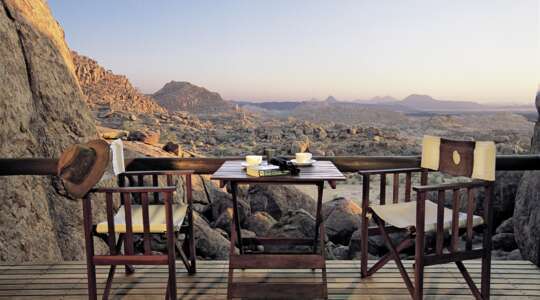
- Damaraland
Hidden amongst vast ochre boulders in Namibia’s Damaraland, you will find Mowani Mountain Camp.
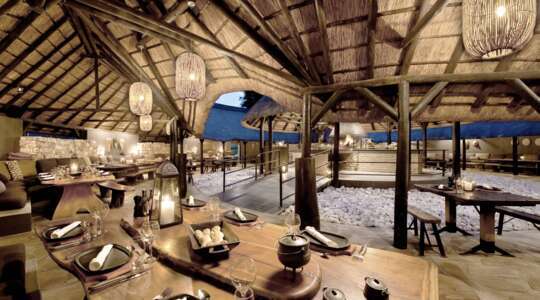
- Etosha
Mokuti Etosha Lodge is a contemporary interpretation of Namibia’s landscape.
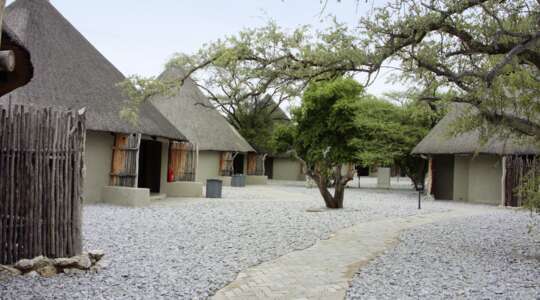
- Etosha
- 3 Star
Etosha's oldest camp, close to the famous Etosha Pan
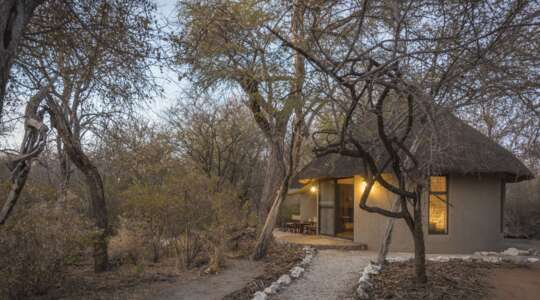
- Etosha
In the local Herero language, Onguma means ‘the place you don’t want to leave’ which perfectly describes Forest Camp.
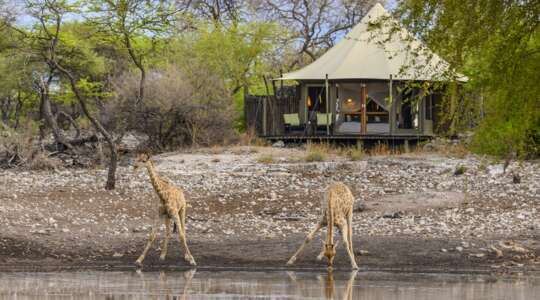
- Etosha
Onguma Tented Camp offers a true African glamping experience.
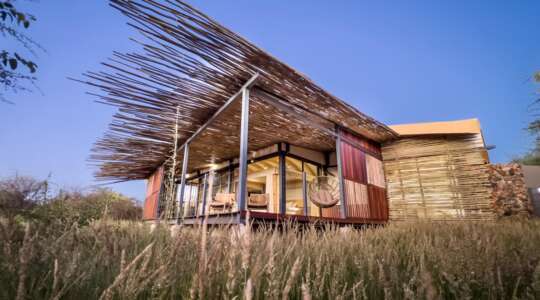
- Etosha
Situated on one of Namibia’s largest private reserves, Ongava Anderssons Camp is a luxurious camp with a strong focus on eco-tourism.

- Etosha
Ongava Game Reserve is a 30,000-hectare nature reserve made up of former cattle ranches located next to Etosha National Park.
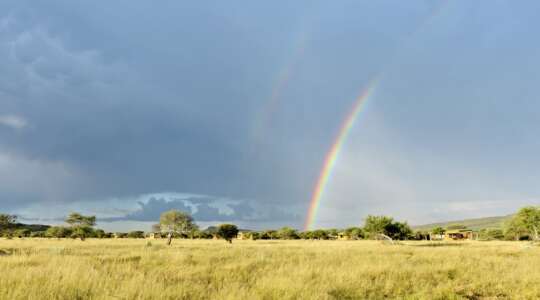
- Ojiwarongo & Okonjima
- 3 Star
Stay among leopard-spotted savannahs at Okonjima Plains Camp
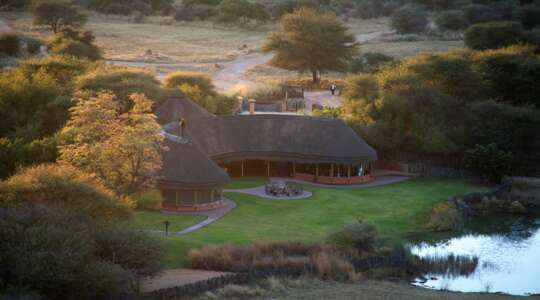
- Ojiwarongo & Okonjima
Okonjima Bushcamp lies on the Okonjima Nature Reserve, a former cattle ranch that’s now a conservation success story and home to the AfriCat Foundation.
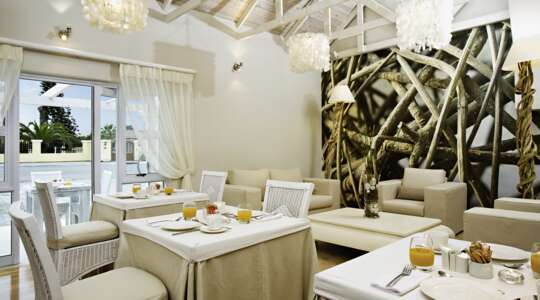
- Swakopmund
- 3 Star
A boutique guest house, just a short walk from the beach
You may also like
Discover the ancient, natural and cultural delights of an untouched land with a group or independent tour of Namibia
Relatively untouched compared to some of its neighbouring countries, Namibia is a joy to explore for travellers with a keen interest in the remote delights of this little-explored land. You can scale towering dunes, walk on ancient clay pans and visit outstanding national parks on a small group tour or independently on a tailor-made itinerary created by us according to your needs.
Catamaran Cruise
Experience Namibia’s diverse marine life on a catamaran cruise of Walvis Bay. Set on the rugged Skeleton Coast, the bay is a haven for pelagic birds and the marine Big Five: whales, dolphins, mola mola, leatherback turtles and seals. You will leave early in the morning, sailing out to Pelican Point, which has a striking lighthouse and a colony of around 60,000 Cape fur seals – you can hear them barking as you approach.
From there, pass oyster farms, huge ships and oil rigs as you sail through the bay. You may spot bottlenose, dusky and Heaviside's dolphins jumping through the waves. If you’re lucky, maybe an albatross will swoop overhead and or you may catch sight of a turtle or giant mola mola. Also known as a sunfish, adults can weigh up to 1,000 kilograms.
Most whale sightings occur between July and the end of October when various species migrate. During that time, you may see whales daily, from southern rights and grays to pygmys and humpbacks. The skippers focus on the educational aspect of the tour and will teach you all about the different animals. Following international regulations, the animals are not crowded and are observed from a distance.
If the wind comes up, the sails will be hoisted and the engine switched off. Finish the tour enjoying sparkling wine and oysters on seafood platters with fresh bread, desserts and drinks.
Living Desert Tour
Meet the unique creatures of the Namib Desert on this educational tour. The aim is to get people to see the dunes with a different eye and realise they’re not just a pile of sand, they’re home to incredible wildlife. Departing from Swakopmund, you’ll be taken in a 4x4 to the coastal dune belt just outside of town.
During the drive, your guide will be looking for tracks and signs in the dunes. Looking for scorpions, spiders and the group informally called the little five: the palmato gecko, sand-diving lizard, fog-basking tok-tokkie beetle, sidewinder snake and chameleon. These secretive animals are tough to spot without the help of an experienced local guide.
When something is spotted, you’ll get a closer look as your guide tells you all about the special adaptations each creature has to survive in this inhospitable environment. You never know what you’re going to encounter in the desert though. End the trip with some exciting big dune driving in custom-built safari vehicles, it’s like a rollercoaster ride.
Marine desert adventure
Explore the contrasting landscapes of Namibia, beginning with a hunt for some of the most fantastic aquatic wildlife. Enjoy a hot drink on board as you approach a Cape fur seal colony and the lighthouse at Pelican Point. Between July and November, you might be able to spot southern right and humpback whales. Taste fresh oysters served with sparkling wine before visiting Sandwich Harbour Lagoon (weather permitting), or heading to the top of a dune for wonderful desert views.
Sandboarding
Soar down the Namib Desert’s dunes on this sandboarding adventure. The tour starts in Swakopmund, where you will be driven eight kilometres into the desert. The landscape is incredible, with dune-top views of the world’s oldest desert on one side and the Atlantic Ocean on the other. It’s brilliant for photos; sometimes, you’ll even spot palmato geckos, beetles and chameleons hiding in the sand.
Expert instructors start with a safety briefing and then teach you the techniques for lie-down and stand-up boarding, which is a bit more technical. Quality snowboards that have been customised to glide perfectly across the sand are used. It’s an exhilarating feeling, rocketing down the dunes - when you’re lying down, you can even reach speeds of 50km an hour!
Afterwards, head down to the beach to watch the waves and have a picnic. You’ll enjoy cold Namibian beers, sandwiches and a lunch platter. As well as an adrenaline rush, the tour also gives you the rare opportunity to get out of your car and immerse yourself in the extraordinary scenery of the Namib Desert.
Skeleton coast scenic flight
View Namibia’s Skeleton Coast from the best seats in the house on this scenic flight. Loop from the seaside resort of Swakopmund past mountains, rivers, little towns and a staggering uranium mine before reaching the untouched beauty of the Skeleton Coast. Haunted by the remains of whales and shipwrecks, you’ll sweep over this beautifully harsh landscape where the vast sea ripples against the burnt orange of the desert in this intriguing juxtaposition of nature.
Windhoek and Penduka tour
After being collected from your hotel, drive towards the city centre stopping at the distinct looking Germanic Christuskirche. It’s overlooked by the Independence Memorial Museum where you will climb to the top and take in the cityscape. Next, walk to Parliament and its peaceful green gardens before visiting the old Cape-Dutch style railway station dating back to the colonial era. Afterwards head to the colourful Post Street Mall, a popular shopping street also renown for displaying around 30 meteorite chunks discovered in Namibia. There’s time for souvenir shopping at an open-air craft market before travelling towards the township of Katutura.
On the way, drive past the Old Location (now a modern suburb), a black settlement created in 1912 before its community were forcibly relocated to Katutura. Stop at Penduka Women Project, a non-profit project on the shoreline of the Goreangab Reservoir where women hailing from Katutura use their skills as artisans to weave beautiful products such as canvas bags and embroidered towels. End by touring Katutura itself to learn of its politics, meet the people and hear some of the local language.
Explore Damaraland: peaks, petroglyphs and desert elephants
Damaraland is unlike anywhere else in Namibia, home to table-topped peaks carved with ancient petroglyphs and dry river beds where desert elephants roam. Explore Damaraland’s highlights, starting with its collection of ancient rock art in Twyfelfontein, a UNESCO World Heritage Site. As Africa’s most extensive rock art collection, you can see over 2,500 animal shapes and geometric designs carved over thousands of years by Namibia’s native bushmen.
As you drive through Damaraland, your guide will point out its signature landmarks; geological formations carved by wind and sand over centuries. There’s a set of impressive dolerite pillars nick-named the organ pipes, a petrified forest of trees frozen in sediment over 200 million years ago and the Matterhorn-shaped volcanic peak, Spitzkoppe. Namibia’s highest mountain, Brandberg, is gorgeous at sunrise and sunset, when it appears to glow, earning itself the title Fire Mountain.
You may see Namibia’s desert elephants, who live in dry riverbeds such as the Huab, Hoarusib and Uniab. These ephemeral rivers flood during rains and are lined with vegetation like ana trees, a vital food source for elephants. Classed as endangered, only an estimated 150 desert elephants are now left in the wild. If you’re lucky enough to spot the elephants your guide will point out the unique adaptations that allow them to survive in the desert, including larger feet to stop them from sinking into the sand.
Explore Etosha, the jewel in Namibia’s safari crown
If you’re craving a safari, there’s no better place in Namibia than Etosha National Park. The country’s oldest conservation area is home to 114 species of mammals and 350 bird species. What’s really special about Etosha though is its spring-fed waterholes, which draw animals from far and wide, especially during the dry season from June to November.
Etosha is good for a self-drive adventure, guided tour or the individual lodges also offer full and half-day safaris with their guides, who’ll know all the best waterholes and wildlife-watching destinations in the park. Perhaps take a break from behind the wheel or your guided tour vehicle and enjoy a ride in an open-sided 4×4, perfect for photographing animals and Etosha’s vast landscapes. Your guide will help you spot everything from giraffes and elephants to big cats and rhinos, as well as plains game like zebra, oryx and the rare black-faced impala.
There’s more to Etosha than just its diverse wildlife; the baobab-studded plains are covered with over 20 types of vegetation. Then there’s the Etosha salt pan, which is Africa’s largest and visible from space. In fact, the local Ovambo people refer to Etosha as the Great White Place after this geological marvel – traversing the pan is like travelling across the surface of the moon, with clouds of white dust flying up in your wake. While the dry season might be best for waterhole sightings, during the wet season the pans flood, creating mirrored lagoons that attract migratory birds, including flocks of flamingos – it’s quite a picture.
Track endangered rhinos and pangolins at Okonjima
Track endangered rhinos and pangolins with the help of the AfriCat team and anti-poaching units at Okonjima. You’ll move quietly on foot, getting up close to rhinos as they graze or lie in the shade. At Okonjima, they are lucky to have a population of ground pangolins, one of the four pangolin species living on the African continent. If you’re fortunate enough to locate a pangolin, you will observe them from a respectful distance in silence so as not to disturb the animals, which are classed as a vulnerable species.
Track endangered rhinos and pangolins with the help of the AfriCat team and anti-poaching units at Okonjima. You’ll move quietly on foot, getting up close to rhinos as they graze or lie in the shade. It’s an incredible feeling being out in the bush near these magnificent animals, immersed in nature. You’ll get to ask our experts about the species and how they’re protected in this 22,000-hectare reserve.
At Okonjima, they are lucky to have a population of ground pangolins, one of the four pangolin species living on the African continent. Pangolins have become a hot topic over the last 15 years as the most highly-trafficked animal in the world. Along with the AfriCat Foundation, they conduct research for conservation purposes and share it with other pangolin projects worldwide.
To track the pangolins, you will need to head out very early in the morning. You might be woken up at 2 am with a to-go cup of coffee, then you’ll venture into the bush with researchers and the anti-poaching unit. If you’re fortunate enough to locate a pangolin, you will observe them from a respectful distance in silence so as not to disturb the animals, which are classed as a vulnerable species. It’s an amazing experience to walk through the bush at night with a headlamp on, searching for these scaly prehistoric animals. \
Hot Air Ballooning over Namib Naukluft Park
The Sossusvlei region of Namibia is the perfect place to do balloon safaris. Take a 10-minute drive to the launch pad, where you can enjoy the spectacle of the balloon inflating and taking shape – a very magical event just before sunrise. After a briefing with your pilots, take to the air.
It’s an hour in the sky travelling wherever the wind takes you over oceans of sand and dramatic mountains. You will typically cover an average of 10 kilometres although some days as much as 30 kilometres depending on the strength of the wind. Meanwhile the crew sets up a beautiful champagne breakfast for when you land, including homemade breads, cheeses, smoked fish, salami pancakes, cereals and yogurts.
Soar over Sossusvlei on a scenic flight
Scenic flights are the best way to appreciate the immense size and beauty of Sossusvlei and the Namib Desert. Take off in a private plane or helicopter to soar over this UNESCO-listed landscape; you’ll get a birds-eye view of the desert below, an ocean of rippling sand that stretches as far as the eye can see. The colours are incredible, especially in the morning and late afternoon when the sun paints the sand different shades, from pale yellow and warm honey to vibrant turmeric and blood orange. It’s a feast for photographers.
The route will usually take you over ancient Sesriem Canyon, which looks like a deep, snaking gash in the desert’s surface, then west to the dune corridor and Sossusvlei. This former dry riverbed is home to Namib’s most impressive dunes and you’ll get to circle some of the tallest, including Big Daddy, Elim and Dune 45. You’ll also notice Deadvlei, a clay pan where dozens of dead camelthorn trees sit stranded, preserved by the arid atmosphere. The landscape is otherworldly – it feels like you’re in a spaceship passing over an alien planet.
Your pilot will provide commentary, pointing out the landmarks below. Look out for famous fairy circles and herds of game as you fly. Trips can be extended to the Skeleton Coast, where the desert meets the crashing Atlantic – some of the most dramatic landscapes you can imagine. Below, you might spot bird and seal colonies, as well as diamond mining camps and shipwrecks as you circle back to the desert.
Hiking in Fish River Canyon
Adventurous travellers will love hiking down into the depths of Fish River Canyon. You'll be guided on a full-day trek through the aptly-named Jelly Legs Gorge, a trail that takes you past epic viewpoints. It’s a challenging hike that involves traversing rock-strewn slopes and scrambling over boulders, but the reward is getting to experience the world’s second-largest canyon. When you hike, you can see the changing layers of sediment up close, the different rock colours and elephant skin weathering.
Along the way, there’s a chance of spotting some of Fish River Canyon’s endemic wildlife, including oryx, kudu and springbok, Hartman’s mountain zebra and the shy rock hyrax. You’ll also notice birds swooping above, including black eagles. The main focus on the walk, though, is the views and the geology. You'll also learn about the flora, which includes over 100 types of succulents and quiver trees which can be up to 300 years old.
Eventually, you will reach the rock pools at the bottom, where you can cool off with a swim in the heart of the canyon. Enjoy a picnic lunch before making the long climb back up to the lodge – it’s a strenuous eight-to-ten-hour journey all together. If you don’t want to tackle the climb, there are flat canyon rim walks you can take instead from the lodge. Walk them in the morning and late afternoon when the light and shadows play across the rocks, it’s spectacular.
Scenic drives in the remote Namib Desert
Explore the remote Namib Desert on a scenic drive. You’ll travel with a guide in a converted Toyota land cruisers. Head out at sunrise or sunset for three hours to the reserve’s top spots. Along the way, you’ll be surrounded by vast grasslands, the Tiras Mountains and rolling sand dunes and you’ll rarely see another vehicle.
The landscapes are the main draw here but you’ll also spot desert creatures as you drive. You’ll stop at waterholes where oryx, springboks and ostriches sometimes gather. If you head out for sunrise, you’ll enjoy coffee and rusks at a scenic viewpoint or sundowner drinks and snacks in the late afternoon. Watching the sun rise or set over the desert is an incredible experience; the sky turns pink and orange and the landscape glows.
You can also take scenic dune drives, which take place on the other side of Kanaan Desert Retreat. The landscape here is covered with shifting sand dunes – the Namib Desert has some of the oldest dunes in the world – dotted with petrified trees. Guests love the adventure of bumping over the dunes in a 4×4. If you’re keen to see the desert after dark, take a night drive which allows you to experience the star-studded night skies and spot nocturnal creatures such as foxes, owls, and striped polecats.
The Kalahari bushman experience
Experience the ancient culture of the Khoisan community, semi-nomadic bushmen whose ancestors have roamed the Kalahari for over 20,000 years. At Bagatelle Kalahari Game Ranch, they have developed close ties with many of the local bushmen families and now work with them to run respectful tours of their villages. This helps provide income for the Khoisan community and gives visitors a glimpse into their traditions, beliefs and lifestyle.
The experience starts with a morning walk to the village, accompanied by the Khoisan bushmen, who’ll show you around their traditional grass-and-mud rondavels. During the tour, you’ll collect water in ostrich eggs, watch the villagers set animal traps and see how women make beautiful pearl and ostrich jewellery. A favourite part of the tour is learning how the Khoisan forage plants and identify which ones to use for food and medicine.
Guests really enjoy this cultural experience and the chance to learn about Namibia’s heritage. The Khoisan community are descendants of the oldest people on earth, so it’s incredible to come face-to-face with this historic way of life, hear the villagers’ distinctive clicking language and discover how they’ve survived in this barren desert landscape for centuries.
Namibia Weather
Apr - Oct
January
February
March
April
May
June
July
August
September
October
November
December
Sorry, your hotel is no longer available
Please check alternatives
-
{{item.body}}
-
{{item.body}}
Choose a departure date
{{store.searchDuration}} nights
Enter rooms & guests
Checking prices & availability

{{term}}, {{formattedDate}} for {{searchDuration}} nights
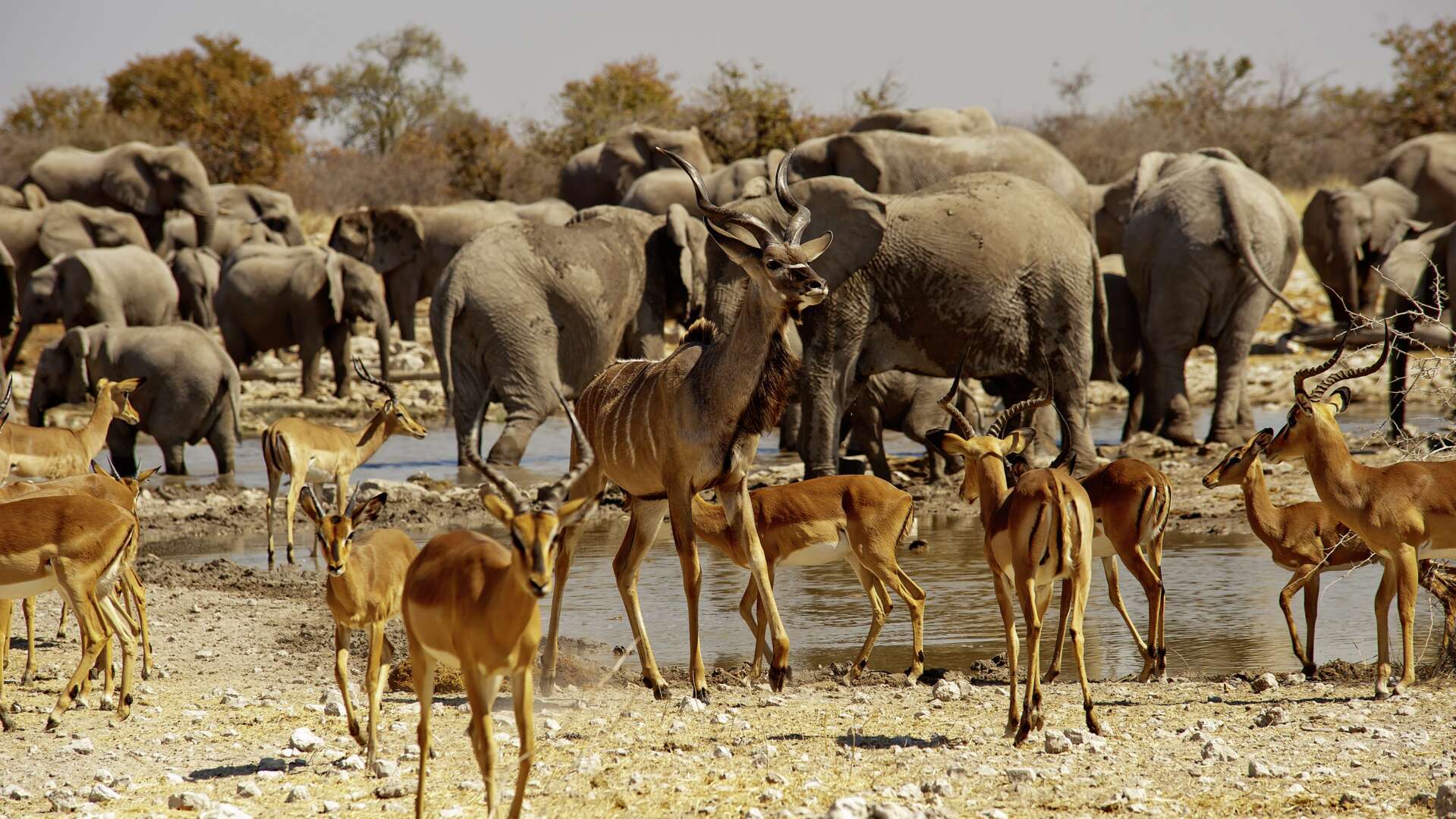

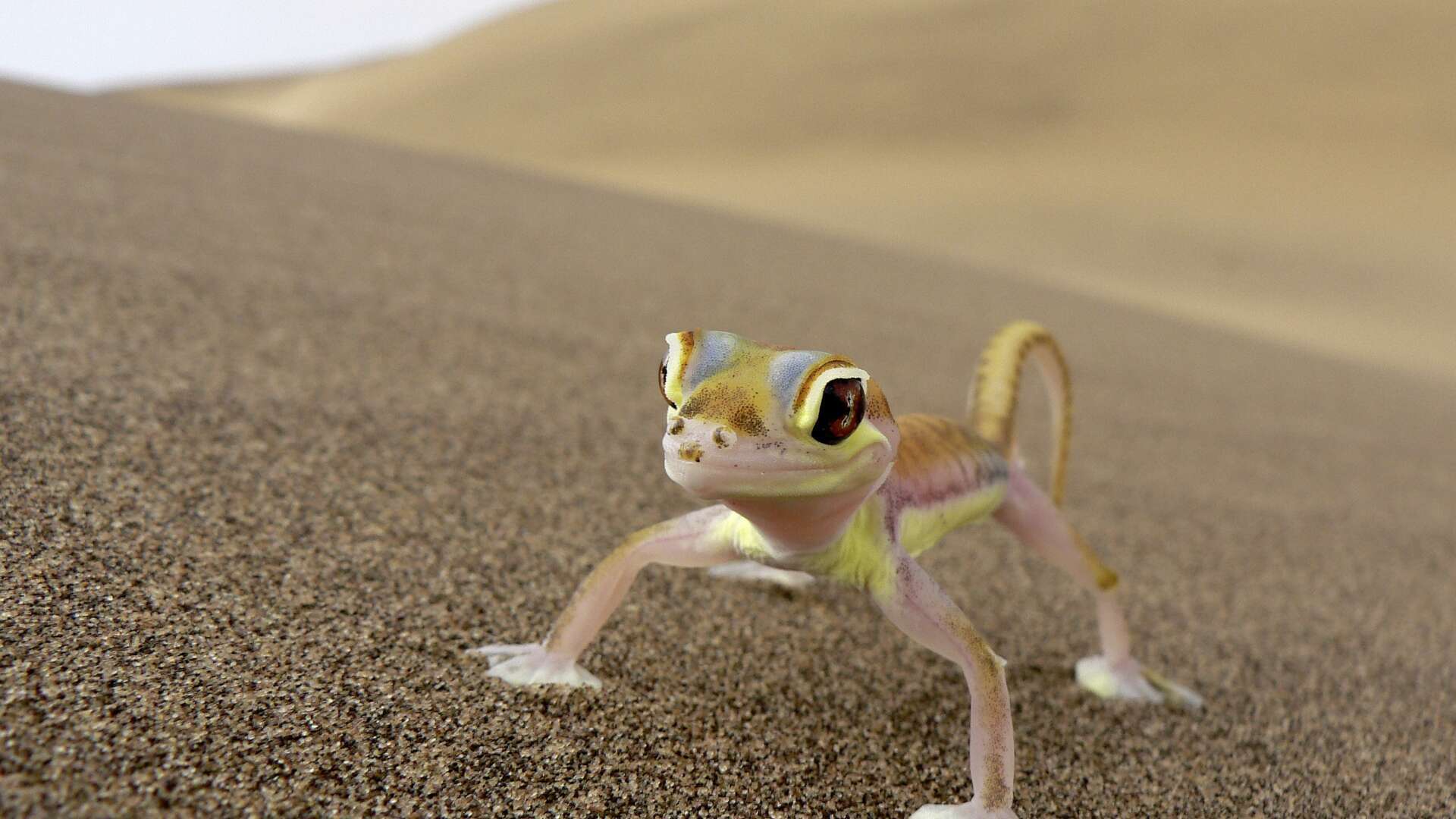
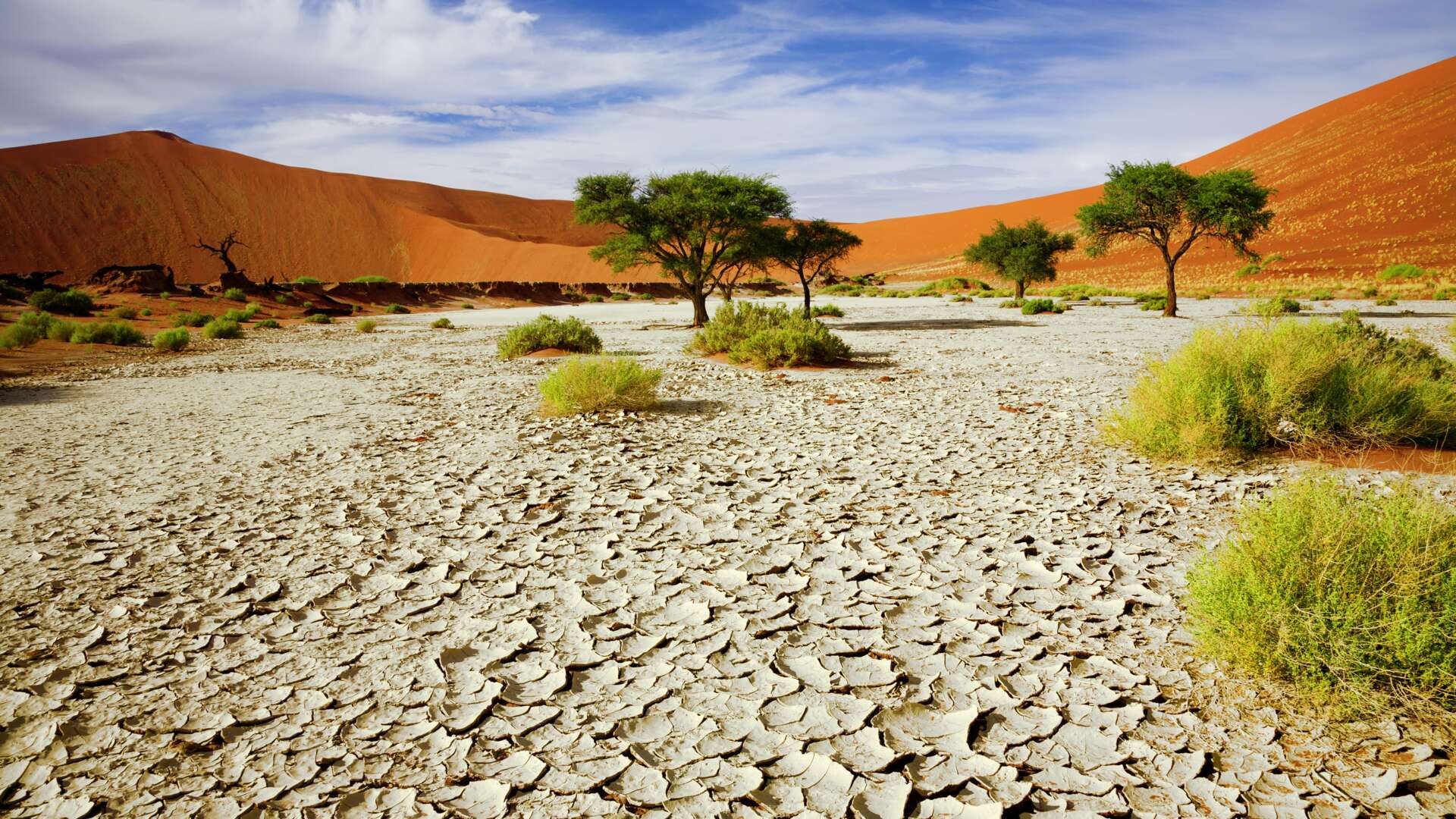
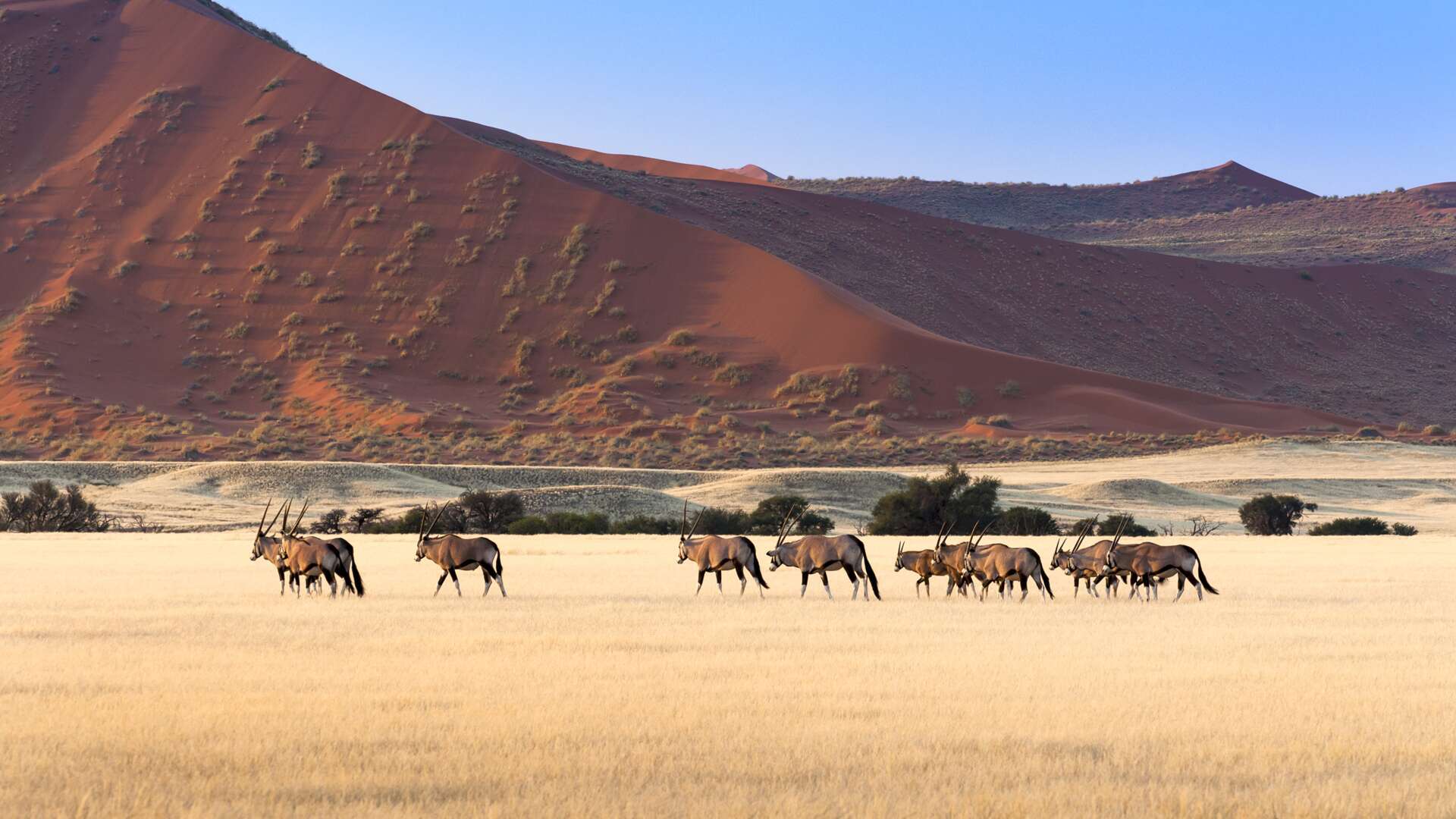
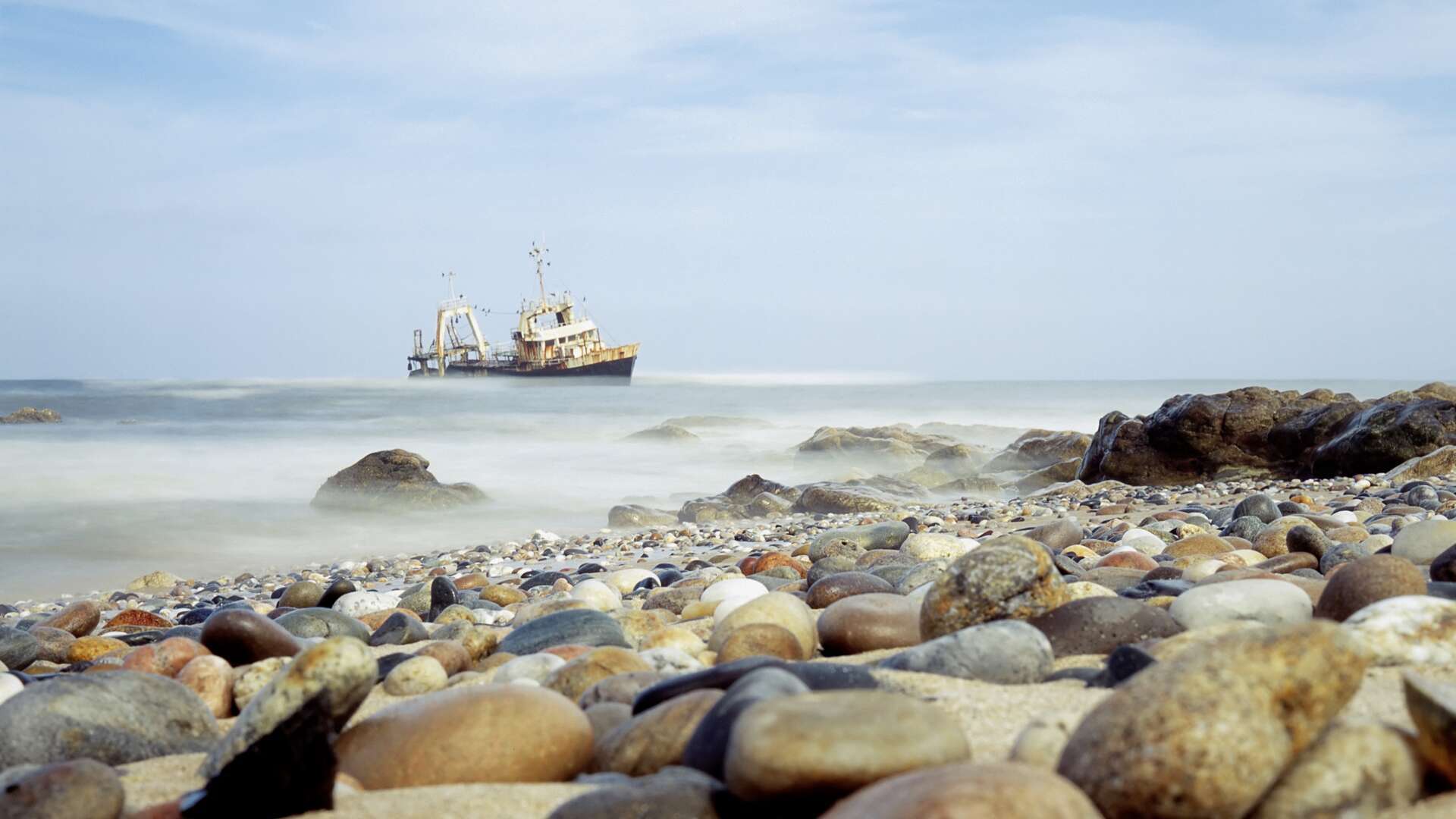
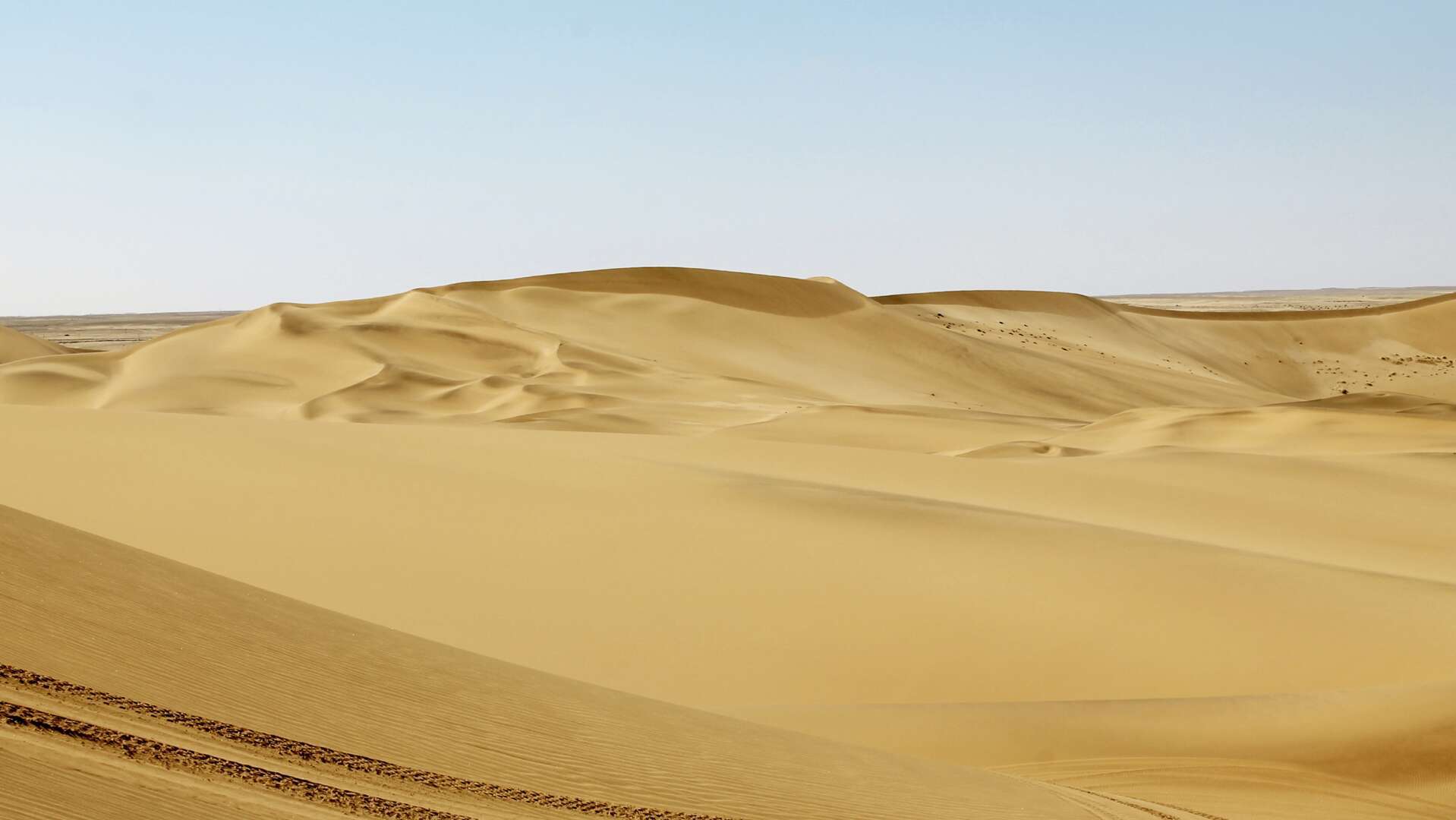
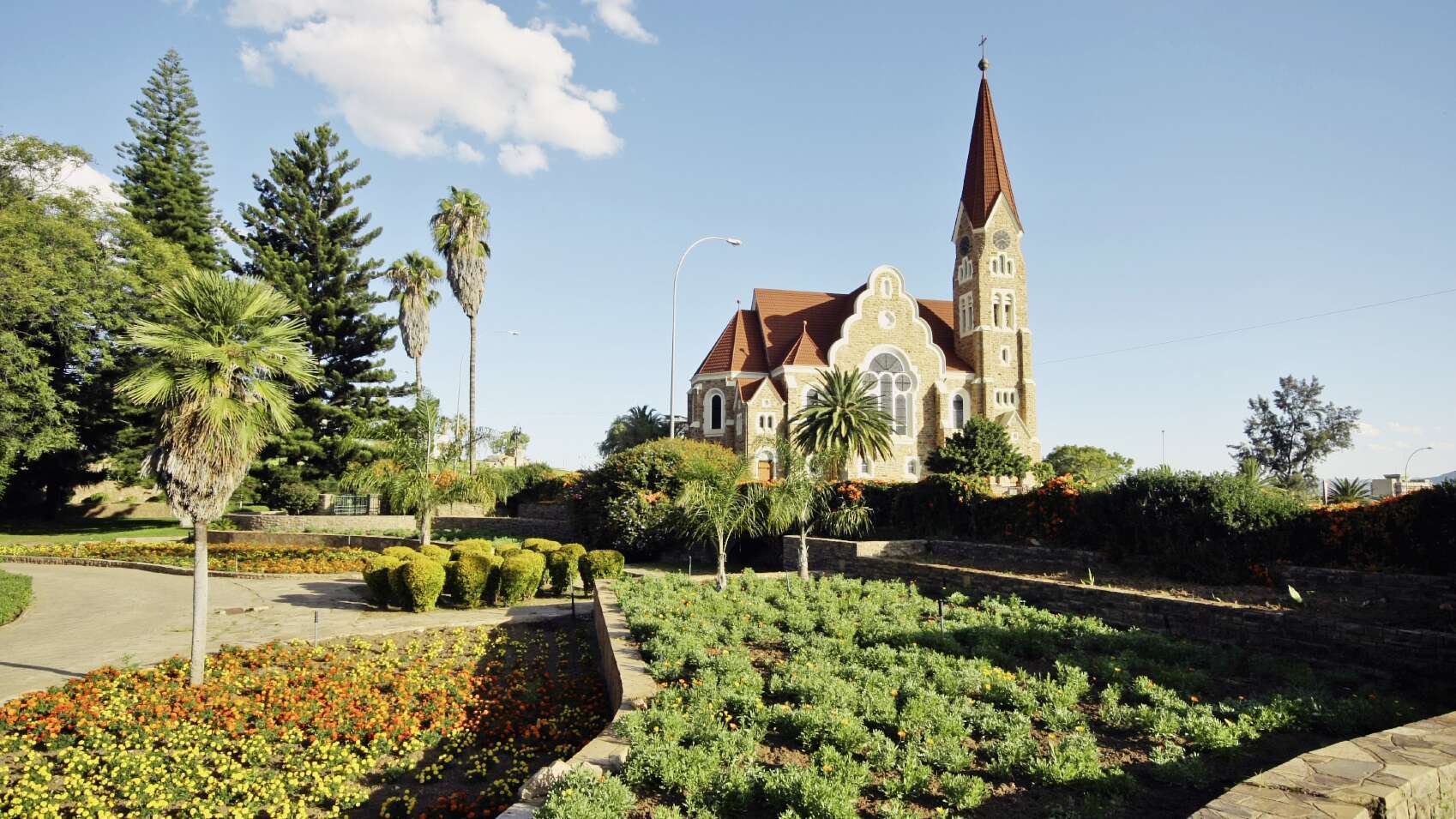
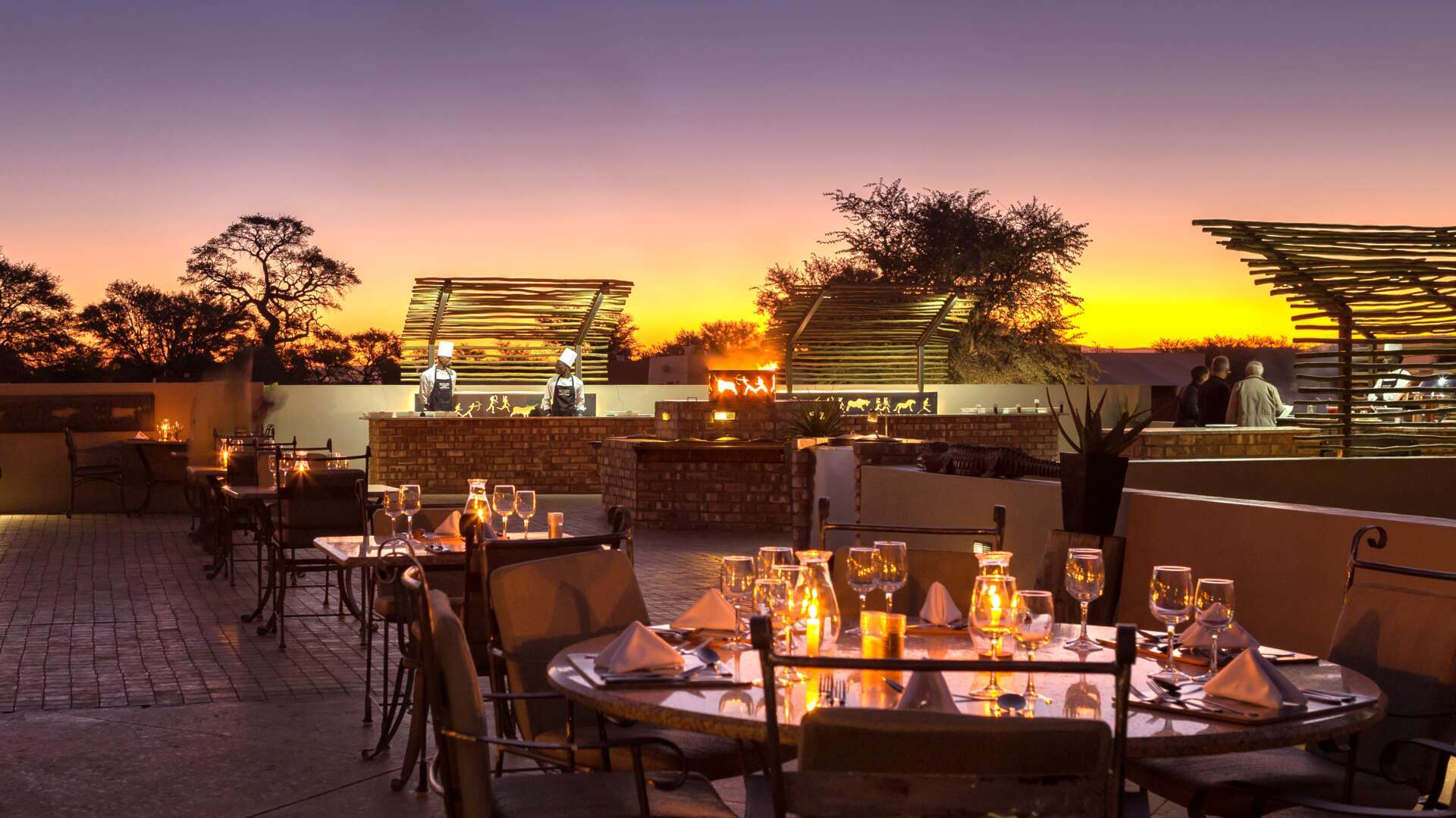
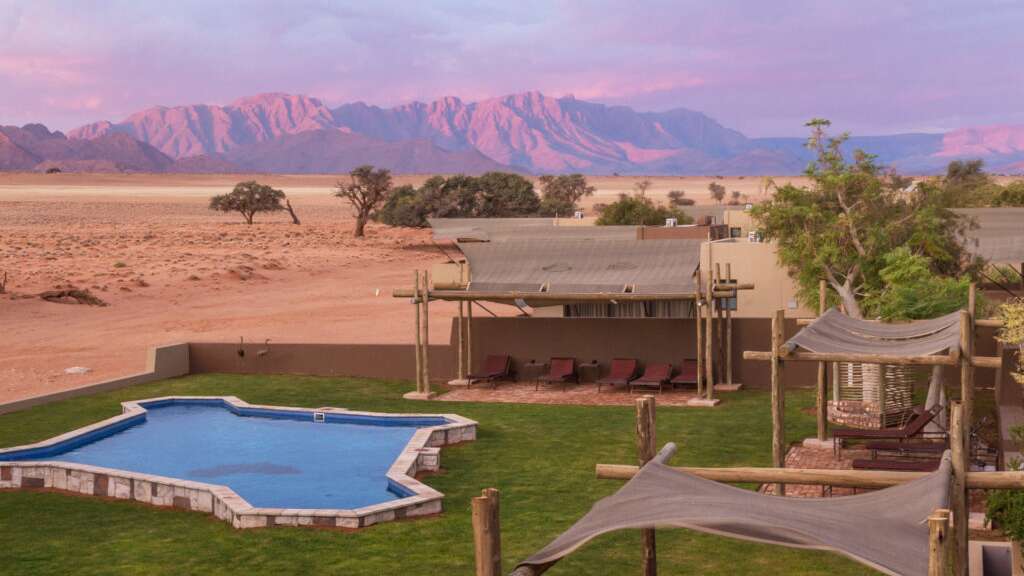
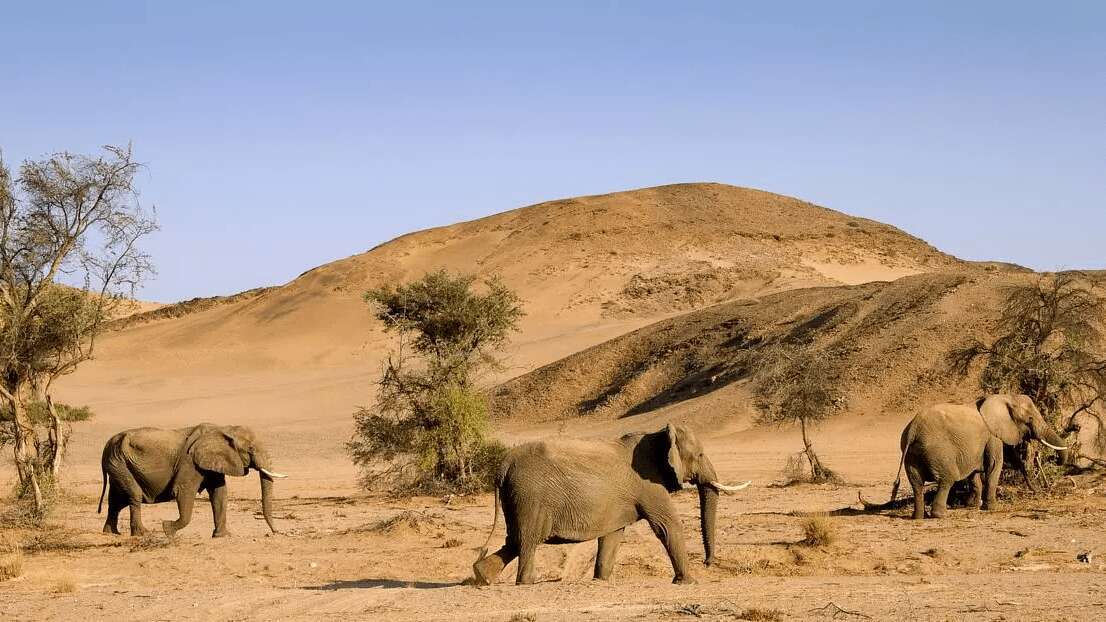
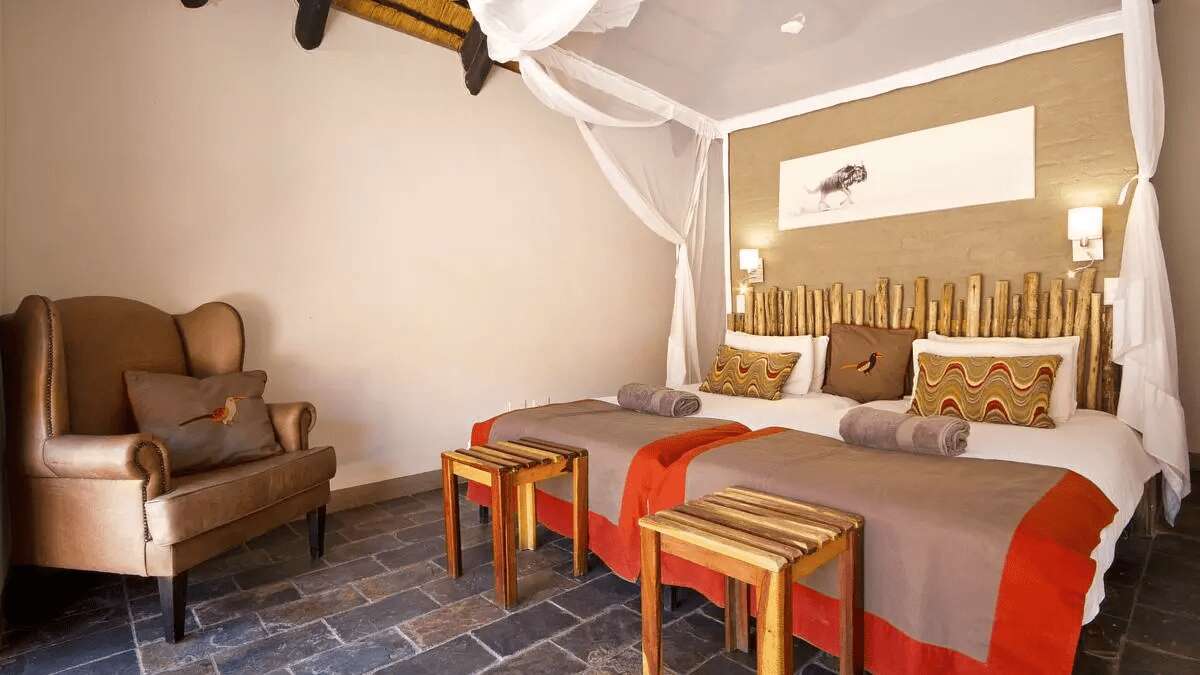
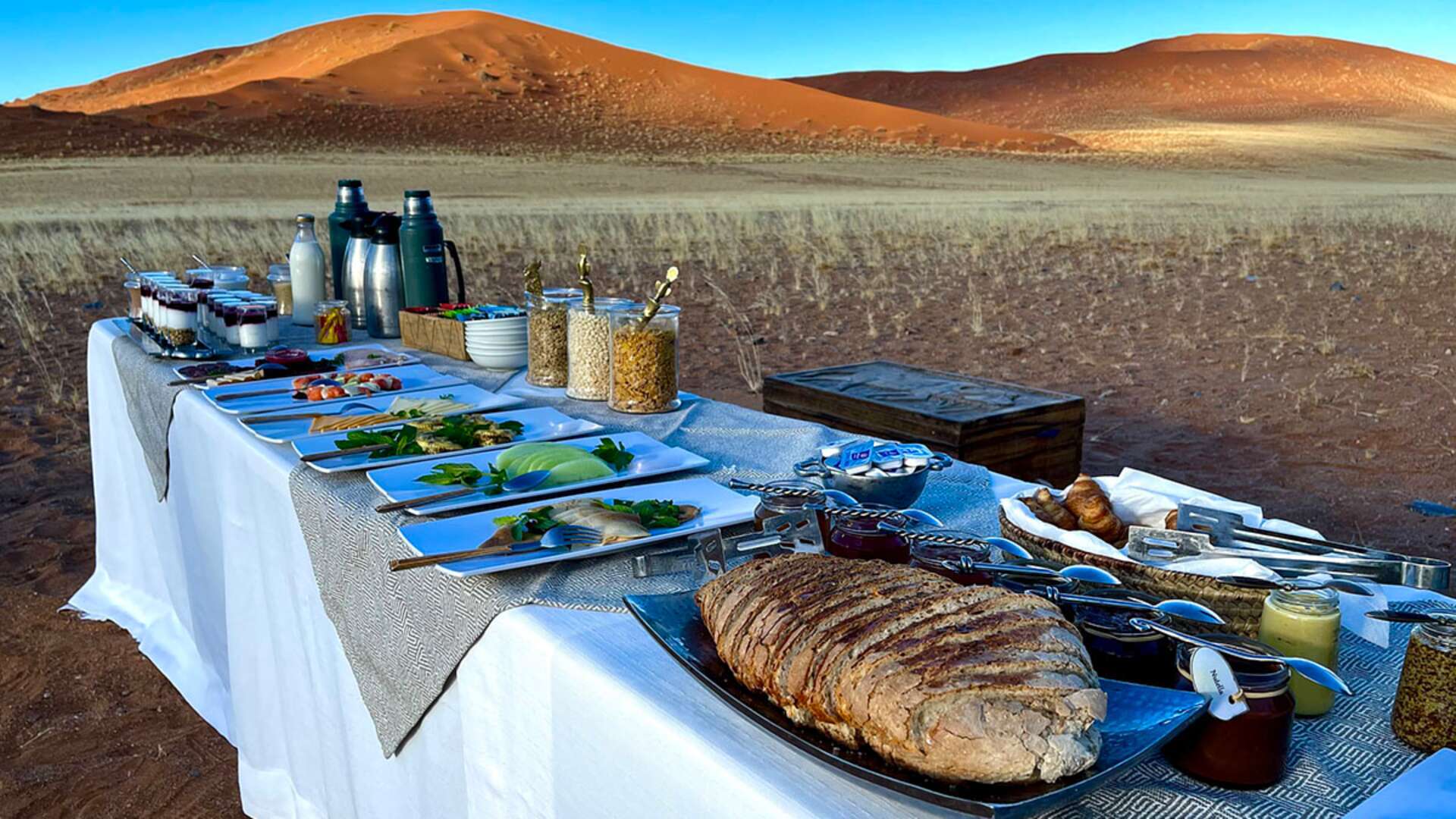
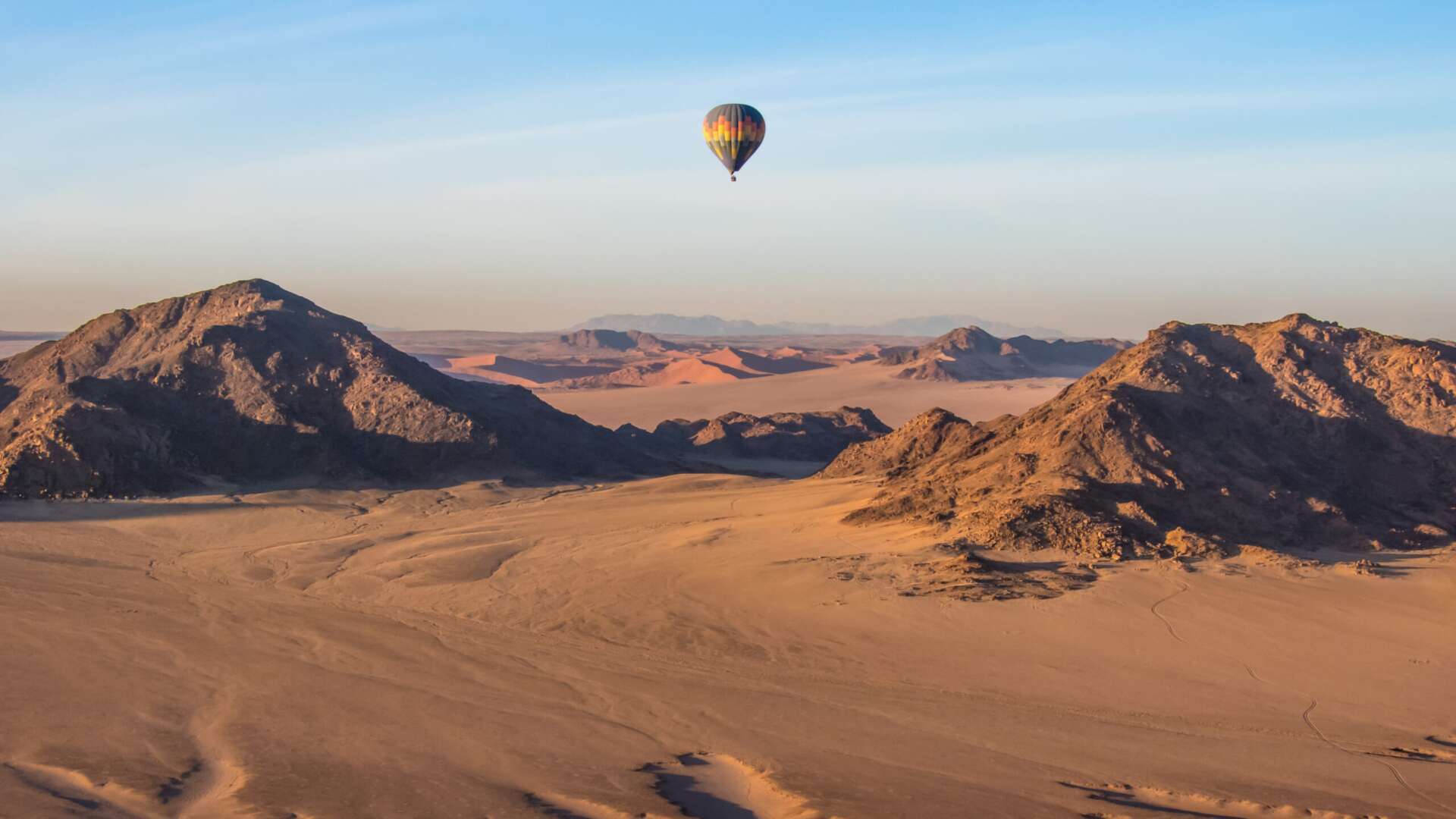
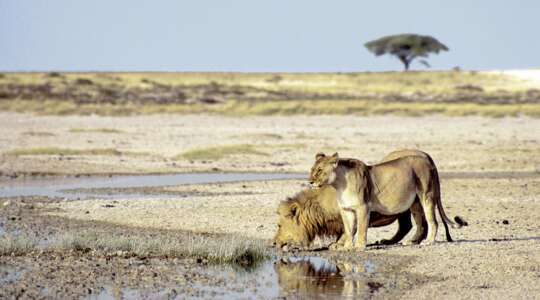
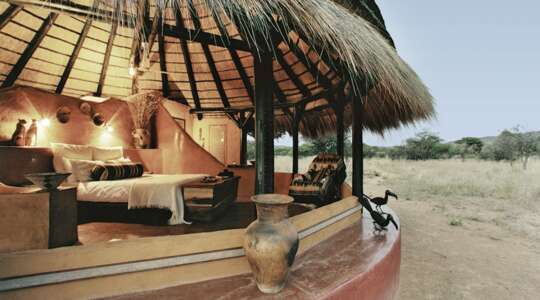
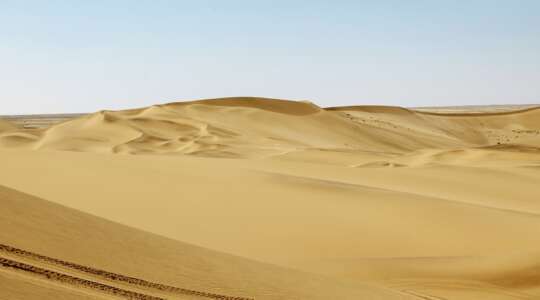
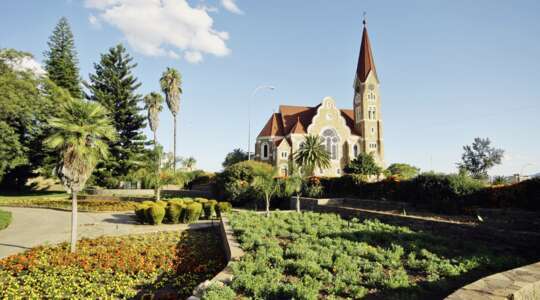
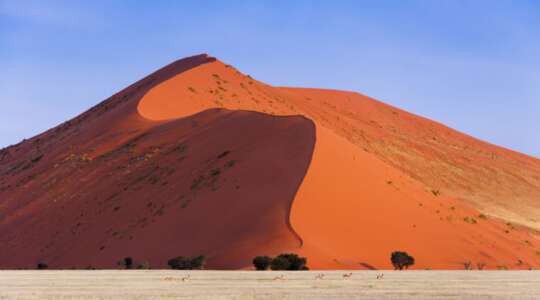



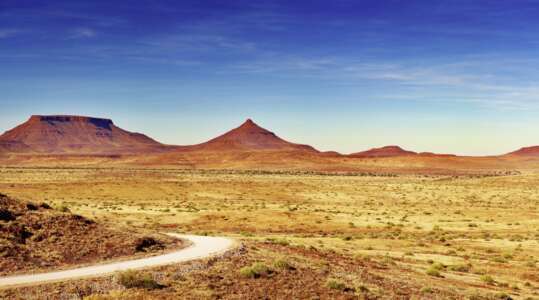
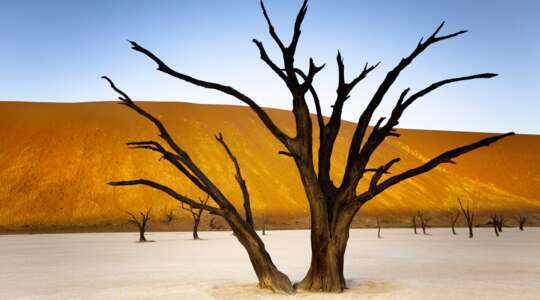
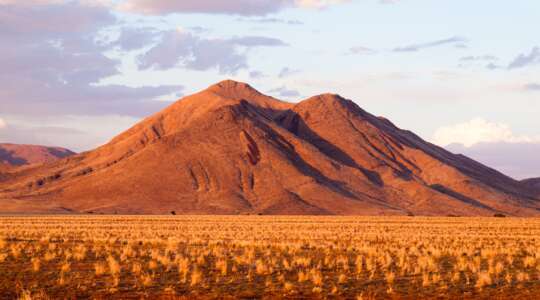

_w=24_h=25.png?v=d272c1958c6b4383fe76ca13ac1f42e2d91606e9)
_w=24_h=25.png?v=d272c1958c6b4383fe76ca13ac1f42e2d91606e9)
_w=24_h=25.png?v=d272c1958c6b4383fe76ca13ac1f42e2d91606e9)